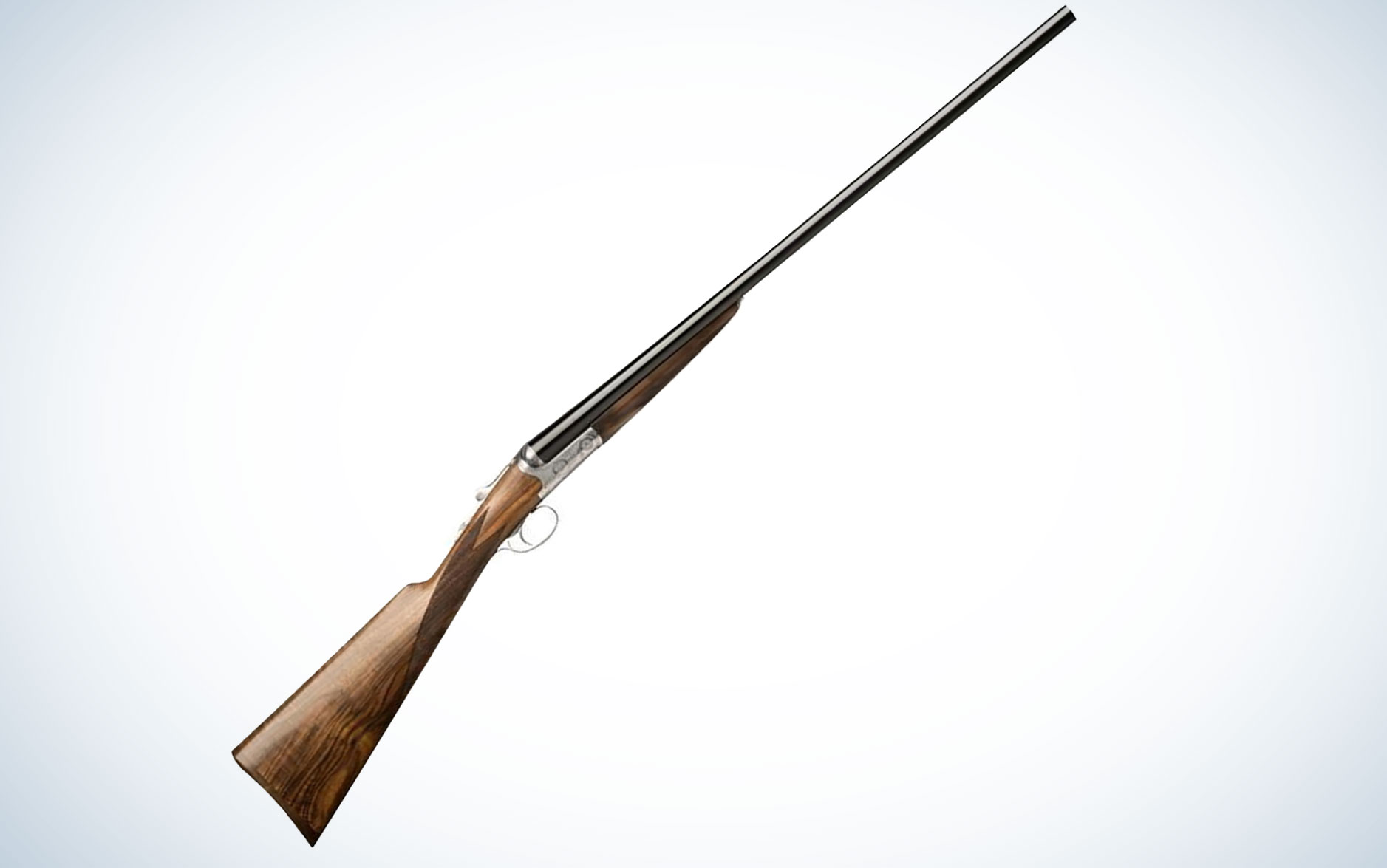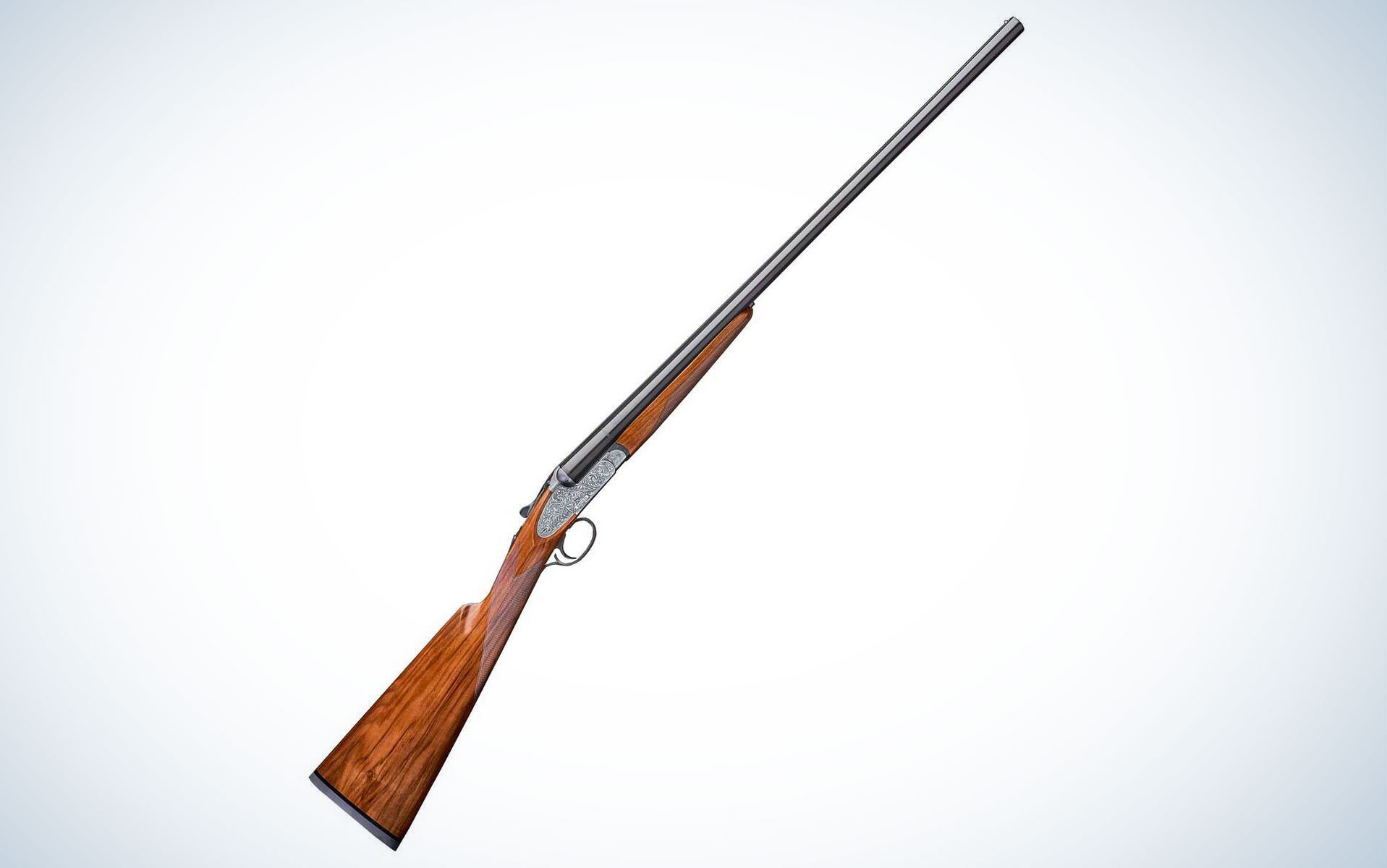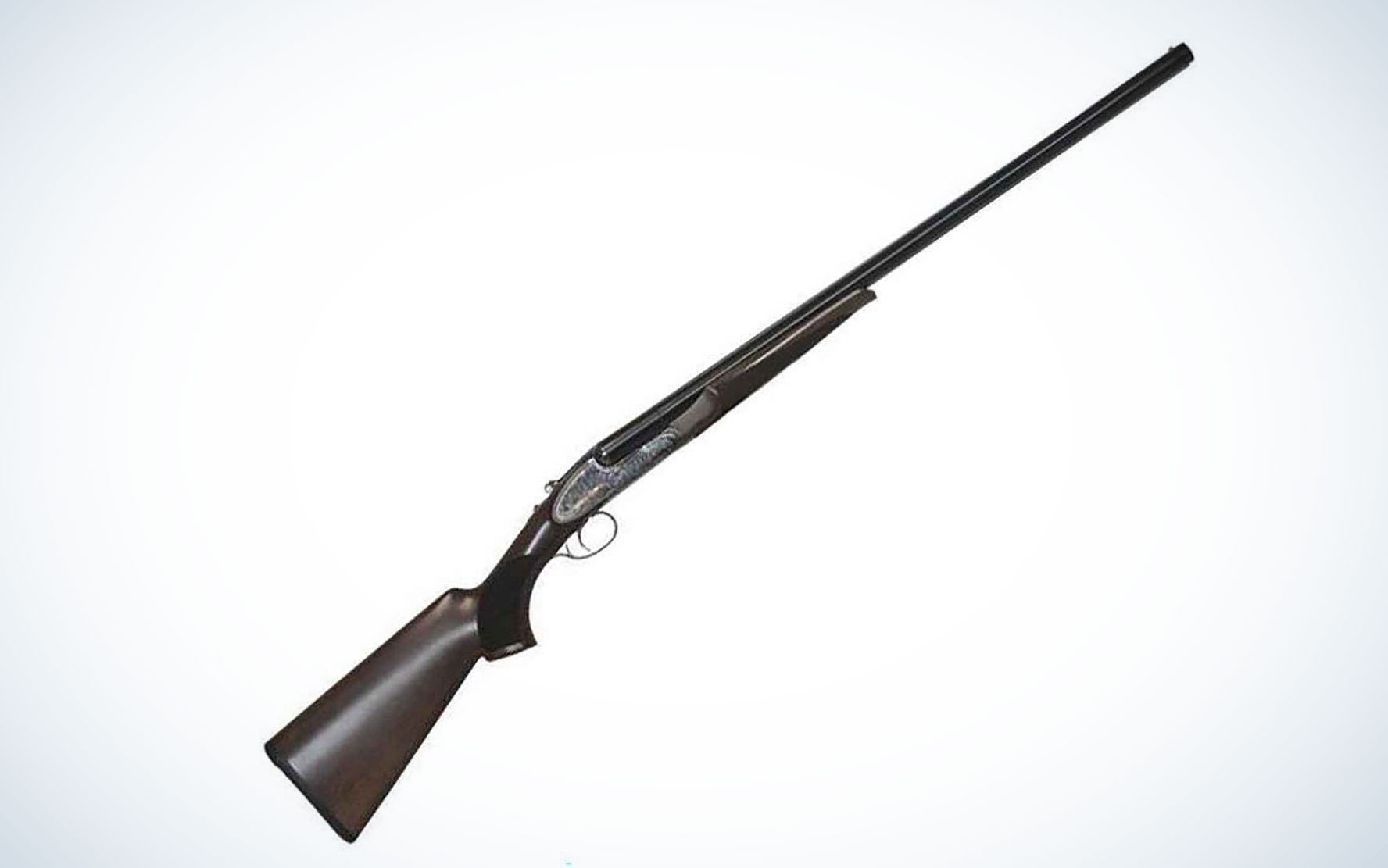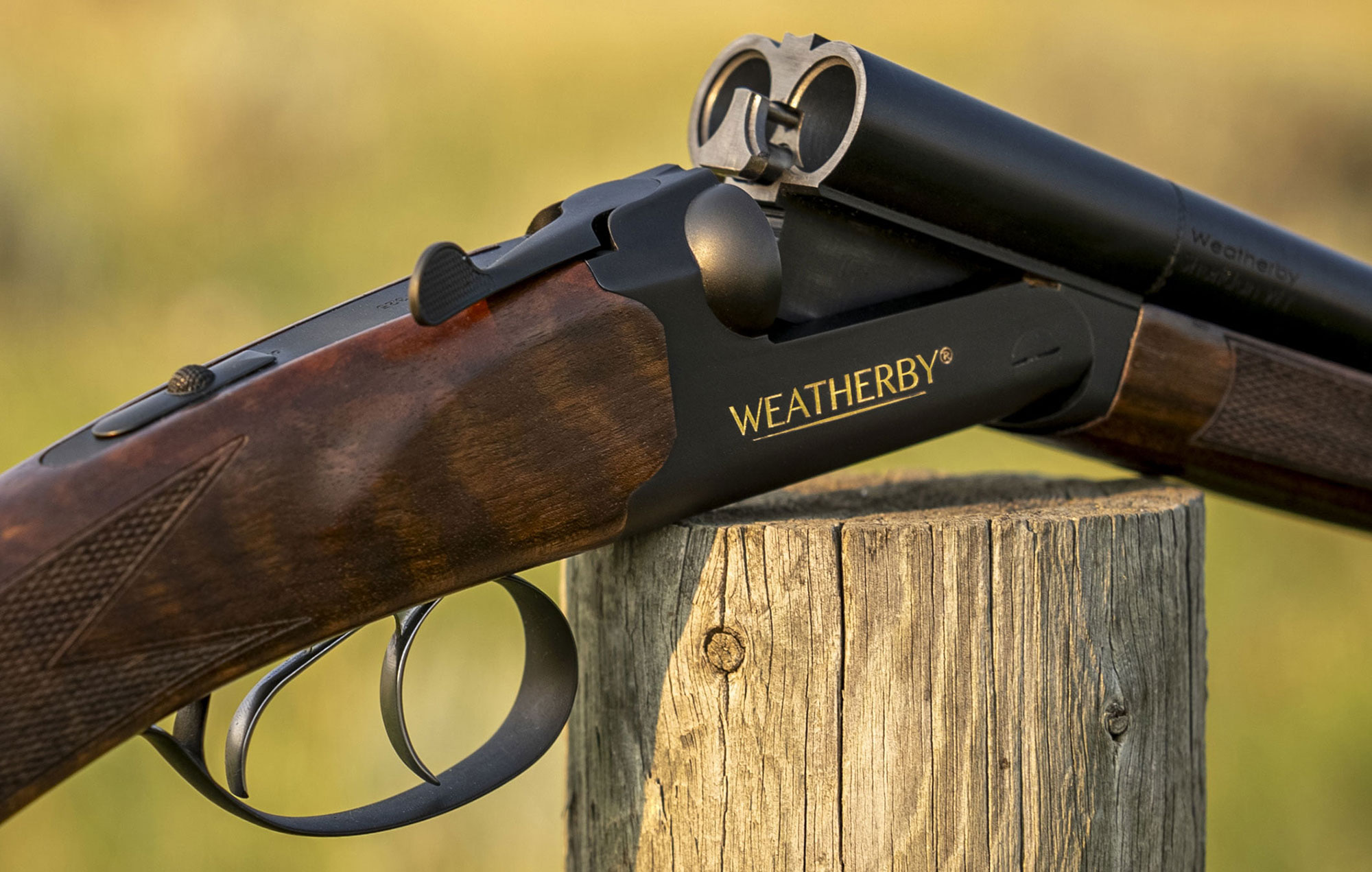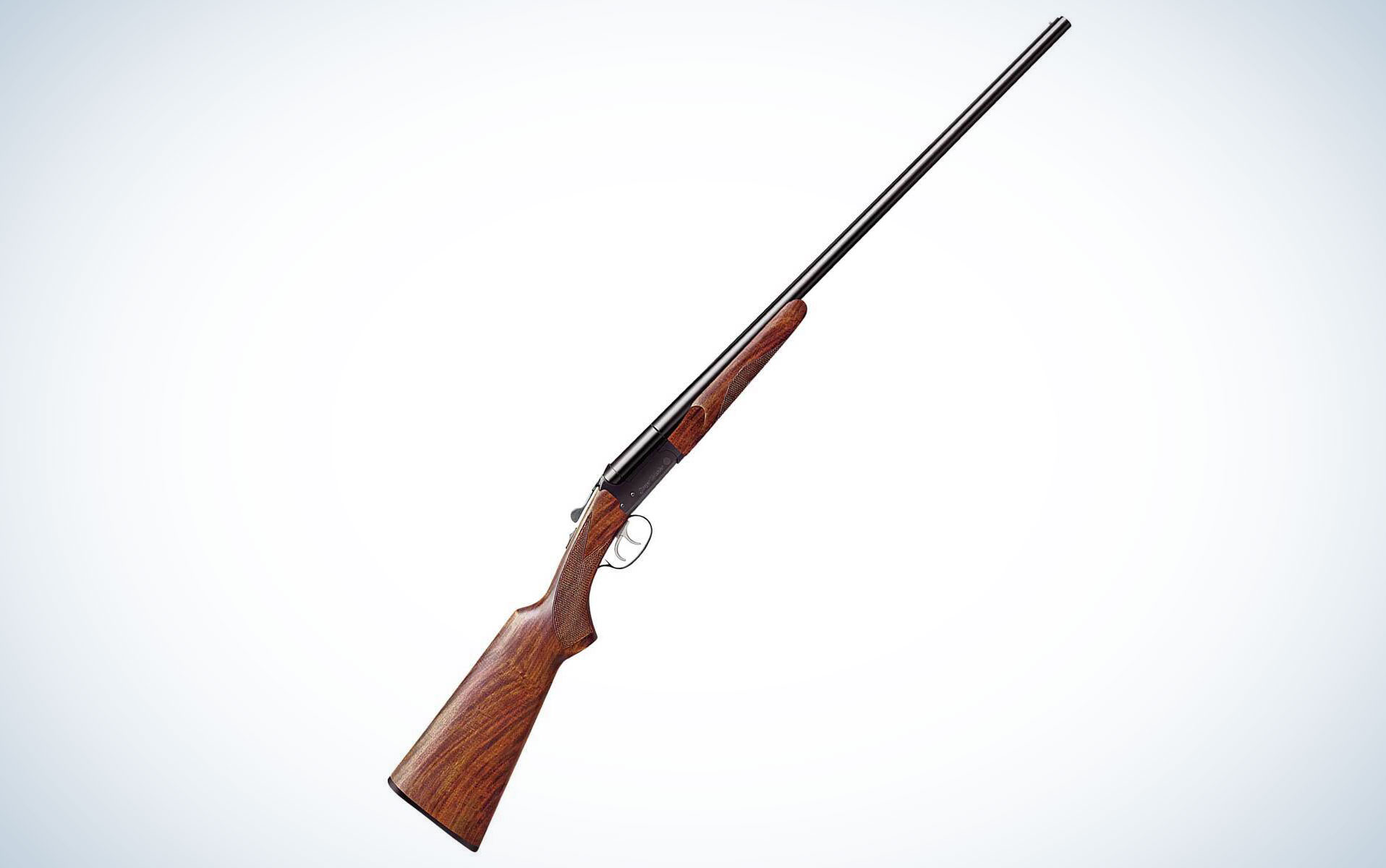The Evolution of Side-by-Side Shotguns in America
The side-by-side shotgun—a platform with two barrels set next to one another—was once the shotgun of choice among sportsmen across North America. The SxS was the premium shotgun platform here in the U.S. from the start of the Civil War until the 1930s. Eventually, less expensive (and less elegant) pump and autoloading shotguns with more firepower outsold the side-by-side. And John Browning’s Superposed, the first commercially successful over/under in U.S. history, was also responsible for the side-by-side’s fall from dominance.
However, doubles have seen a resurgence in the last 15 years. Millennial upland hunters are chasing more grouse, woodcock, quail, and pheasants with side-by-sides than any other living generation with the exception of Baby Boomers (more on that later). Several gun manufacturers have taken notice and now produce price-point SxS shotguns for this specific group of hunters, many of whom don’t yet have the financial means to buy a spendy heirloom. Here’s what you need to know about the modern side-by-side.
What Is a Side-by-Side Shotgun?
Put plainly, Side-by-Side shotguns can fire two shotshells through a pair of barrels joined together horizontally. Here are some of their other features and characteristics.
Chokes & Barrels
Older side-by-sides had fixed-choke barrels, not the screw-in chokes that you will find in modern shotguns, which allow shooters to easily manipulate shotshell patterns. Older shotguns were built with Damascus barrels, which are not safe to shoot hard steel shot through. Softer metals, like bismuth, Kent’s Tungsten-Matrix, and lead should be used with such guns.
Triggers
Double-barrel shotguns have either one trigger or two. Having double triggers (one for each barrel) gives you the option to quickly select which barrel fires first. The two-trigger design has proven to be reliable over the decades. However, shooting with two triggers does take getting used to.
Single triggers will either be mechanical or inertial. Inertial triggers use the recoil of the gun to prepare the shot with the second hammer. This design is meant to prevent doubling (accidentally firing both barrels nearly simultaneously) however, if for some reason the first round does not fire, neither will the second. If for example, the first shell has a bad primer, you will also not be able to fire your second shell. Mechanical triggers, on the other hand, do not require recoil to set. Two pulls of the trigger should result in both hammers falling independently.
Actions
Side-by-sides are built on boxlock or sidelock actions. Lockwork releases the gun’s sear when the trigger is pulled so that a spring can drive the hammer through a striker hole. This detonates the shell. Boxlocks are simply that: the linkages sit inside a box in the action. The Anson and Deely design of the late 1800s provided the foundation for most all future boxlock blueprints. Boxlocks have far fewer parts than sidelocks and are known for their reliability because there is less that can go wrong with them. Sidelocks have many more pins and screws (some have as many 55 main parts), so they are time-consuming to manufacture. As you might have guessed, the locks of a sidelock sit on the sides of the action. That allows for more solid steel to be built into the action, providing added strength.
Shooting & Loading
The action of a double is shallow and the rib is flat so that you have a wide field of view after mounting the gun, though you will see two barrels instead of one, which can be a difficult adjustment for some. Shotshell detonation also affects muzzle jump a bit differently in a side-by-side. With a single-barrel or over/under shotgun, the barrel moves vertically with recoil after the shot; the recoil on side-by-sides have a more horizontal component.
Loading a side-by-side is slightly easier than loading an over/under because the barrels do not have to open as much to expose the chamber.
Modern Side-by-Sides
Here in the U.S., SxS shotguns are occasionally used in competitive shooting, and for hunting ducks, turkeys, and small game. But they have become increasingly popular among upland bird hunters, particularly those who hunt in thick cover. Many traditional grouse and woodcock hunters in the Northwoods of Michigan, Wisconsin, and Minnesota as well as New England, rely on a sub-gauge side-by-side. They are often lighter than over/unders and have shorter barrels, making them easier to snap-shoot when a bird flushes in tight cover.
The resurgence of double guns is detailed in Project Upland’s 2022 annual survey of upland bird hunters. The survey shows that the purchase of side-by-sides has risen since 2018. According to their data, Baby Boomers remain the number one buyer of the platform, but Millennials are second, a number that has increased almost 10 percent from 2018. A handful of boutique gunmakers that specialize in doubles have ramped up manufacturing—AYA, RFM Armi, and Upland Gun Company (which builds semi-custom side-by-sides) to name a few. Larger gun makers, like Fabarm, Weatherby, CZ-USA, and Chapius, a French gunmaker that Benelli owns, have all made double gun sales a priority.
Pros and Cons of Side-by-Side Shotguns
SxS are ideal for some hunting pursuits, but they have their disadvantages as well. Here’s a look at what a side-by-side does and doesn’t do well.
Pros
- Fit and finish of most SxSs are better than repeating shotguns
- Typically lighter than other break-action platforms
- Shorter overall length allow for easier use in thick cover
- Shallow action and flat rib offer a wide field of view
- Barrels don’t need to swing open as much, so loading is less difficult than an over/under, especially in duck blinds
- Double triggers simplify barrel selection
- More gun makers are manufacturing affordable models.
Cons
- Lack of versatility in comparison to repeating shotguns and over/unders
- Slightly more challenging recoil impulse to master
- Affordable, but definitely not cheap
- Capacity of only two shotshells
- Availability of some models can be sparse
- Recoil can be stout with heavy game loads
A Brief History of Double-Barrel Shotguns
Let’s look back to the settlement of the American West, when pioneers, farmers, lawmen, and barkeeps from Kansas to California relied on side-by-side shotguns as a means of survival. Parker Bros., L.C. Smith, Lefever, Ithaca Gun Co., A. H. Fox, and Winchester are the most well-known American side-by-side gunmakers, though the origin of hand-made double barrels lies in Western Europe. Famed British gun houses like Westly Richards, W.W. Greener, and Holland & Holland have been in operation for centuries and continue to build beautiful bespoke doubles for sportsmen who can afford such luxuries.
Trick shooter Annie Oakley famously wielded both American and English side-by-sides in her performances. Western legend Wyatt Earp often relied on a coach gun—a double-barreled hammer gun with cut-down barrels—to settle disputes with malcontents. You may recall the movie “Tombstone” in which Wyatt’s brother Virgil Earp (Sam Elliot) hands Doc Holliday, played by Val Kilmer, a street howitzer before the shootout at the O.K. Corral. The 10-gauge double, a Belgian-made Meteor, was ideal for a close-quarters fight. It’s believed that Virgil handed Holliday the same model gun prior to the real fight in 1881, though Holliday reportedly owned a Colt 10-gauge.
Early outdoor journalists Burton Spiller and Willam Harden Forester wrote extensively about side-by-side shotguns as American hunters began to more readily use double guns in pursuit of wild game. Gordon MacQuarrie and Nash Buckingham continued to detail the legacy of double guns into the mid-20th century. Buckingham’s 12-gauge A. H. Fox HE-Grade Super Fox “Bo Whoop” has been written about in a myriad of outdoor publications. It is America’s most celebrated sporting side-by-side with John Olin’s Winchester 21 a close second.
The use of side-by-sides for hunting began to wane in the U.S. with the advent of repeating shotguns. Winchester’s 1897 pump-action and John Browning’s long-recoil semi-automatic A5 may have lacked the aesthetic beauty of Buckingham’s Super Fox, but they supplied American hunters with more firepower. The 1897 held six shells and the A5 allotted hunters five shots. Repeaters were also easier to manufacture, so they were produced more quickly than side-by-sides at a cheaper cost to the consumer.
In 1931, the Superposed made its debut. The popularity of that classic over/under—it’s still one of today’s most coveted shotguns by American shooters and hunters—combined with the influx of semi-autos and pumps to the market significantly curbed the sale of side-by-sides. This resulted in the sale or demise of several prominent double gun firearm companies. Park Bros. sold to Remington in 1934. Ithaca Gun Co., which had purchased Lefever in 1916, discontinued the production of Lefever doubles in 1921. Savage-Stevens bought A.H. Fox in 1929, and Hunter Firearms, owner of L.C. Smith, sold to Marlin in 1945.
The Return of Side-By-Side Shotguns
Technology has given modern gun companies the ability to produce affordable double-barrel shotguns that are attainable for a broad customer base. Much of that is due to machines replacing manufacturing processes that were once done by hand. The decrease in overhead has led to a measured resurgence of side-by-sides. You can now buy a Turkish-made double for as little as $500. You can also purchase a much more elegant Italian model with some machine work and some handwork for $6,000. And there are plenty of other doubles that fall in between those two price points.
Side-by-Sides for $6,000 to $3,000
In the side-by-side shotgun world, it’s not uncommon to spend $3,000 to $6,000 for a quality gun. Shooters who are willing to spend have a variety of options.
Beretta 486 Parallelo
The rounded action and straight English-style stock on this 20-gauge (also available in 12) gives the Italian 486 Parallelo the look of a side-by-side built at one of London’s bespoke shooting houses. The stock pairs seamlessly into the engraved action. Beretta’s beavertail forend fits nicely into your hand, and the cold-hammer forged Optima-Choke barrels are Beretta’s mid-level option.
Fausti DEA SLX
Fausti is one of the best kept secrets of the world. You’ve probably seen a break-action with barrels built by Fausti without knowing it (several gun manufacturers have had barrels made by Fausti over the company’s 75-year existence). The DEA SLX is part of Fausti’s Core line and costs around $5,000. It’s available in every gauge (except 10), including .410-bore. Each frame of the DEA SLX is scaled to the appropriate gauge. That means the action of a 20-gauge is built for a 20, not a 16- or 12-gauge, which adds unwanted weight to the gun. Some gun makers will use one gauge frame for multiple gauges to save on costs. But Fausti places a premium on craftsmanship.
Side-by-Sides for $2,500 to $1,000
Shooters willing to pay $1,000 to $2,500 have more side-by-sides to choose from than ever. Gun makers all over the world are producing doubles in this price range. That’s a good thing for consumers, but can also make it challenging to decide which model to buy.
RFM Zeus
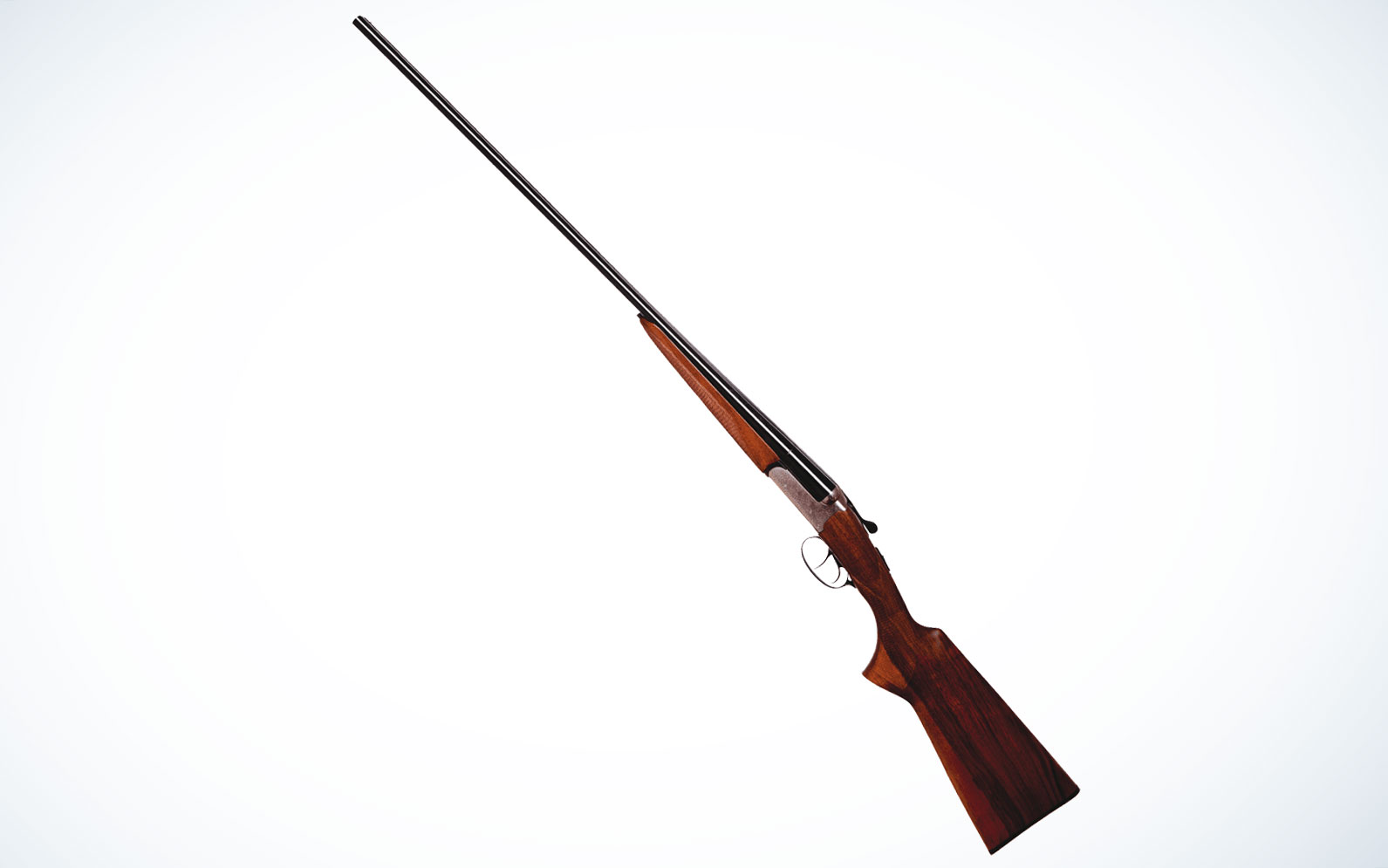
Upland Gun Company is your source for this Italian side-by-side, which can be tailored to individual shooters. RFM builds semi-custom break-actions so that you can select from many options, including gauge, finish, trigger, barrel length, wood grade, stock length, and more. That’s unheard of for a $2,000 double. Most have to be bought off the rack as is.
CZ Sharp-Tail
This gun evolved from CZ’s Ringneck, but the Sharp-Tail has a different action that uses coil springs instead of leaf springs to operate the hammers. That reduced the profile of the action to improve the sight plane for shooters and took some weight out of the gun. You can pick the Sharp-tail up for around $1,000 in 12-, 20-, and 28-gauge, plus .410-bore.
Side-by-Sides for Under $1,000
There are a few side-by-sides that can be had for under $1,000 (most are made in Turkey) but lower your expectations in terms of the quality of fit and finish. If you are dead set on shooting a double gun, and don’t get too hung up on looks, there are a handful of side-by-sides that won’t break the bank. (Read our full roundup of affordable side-by-side shotguns here).
Weatherby Orion
Weatherby resurrected the Orion side-by-side this year (it originally debuted in 2002), making it available in 12- and 20-gauge as well as .410. The first generation Orion double gun was built in Spain, but this version, designed on a sturdy boxlock action with double triggers, is a Turkish import. Five extended chokes—SK, IC, M, IM, and F—are included, plus the Orion is chambered for 3-inch shotshells if you wish to take it duck hunting.
Stoeger Uplander
If you’re looking for an introductory side-by-side, the Stoeger Uplander costs less than $500. Stoeger offers the Uplander in 12-, 20-, and 28-gauge, plus .410. Each of those bores has a 26-inch barrel option (28-inch is also available for 12, 20, and 28), ideal for Northwoods grouse and woodcock hunters, swinging on birds in heavy cover. The transitions from the wood stock and forend to the steel action are not seamless, but you’re buying the Uplander for its functionality, not beauty.
Final Thoughts on Side-by-Side Shotguns
Every bird hunter should have at least one SxS in the gun cabinet. Sure, these guns are easy to carry, reliable, and practical when hunting thick cover. But perhaps more importantly, they offer a chance to embrace nostalgia and connect with our hunting roots. That can be true even if your side-by-side isn’t a handmade heirloom.
The post The Evolution of Side-by-Side Shotguns in America appeared first on Outdoor Life.
We may earn revenue from the products available on this page and participate in affiliate programs. Learn More ›
Source: https://www.outdoorlife.com/guns/side-by-side-shotguns/

